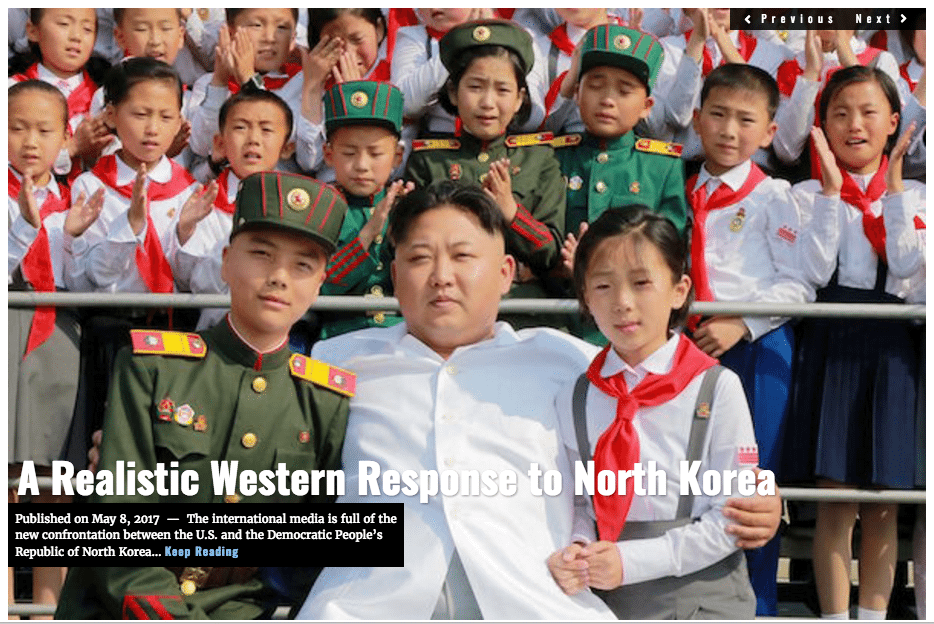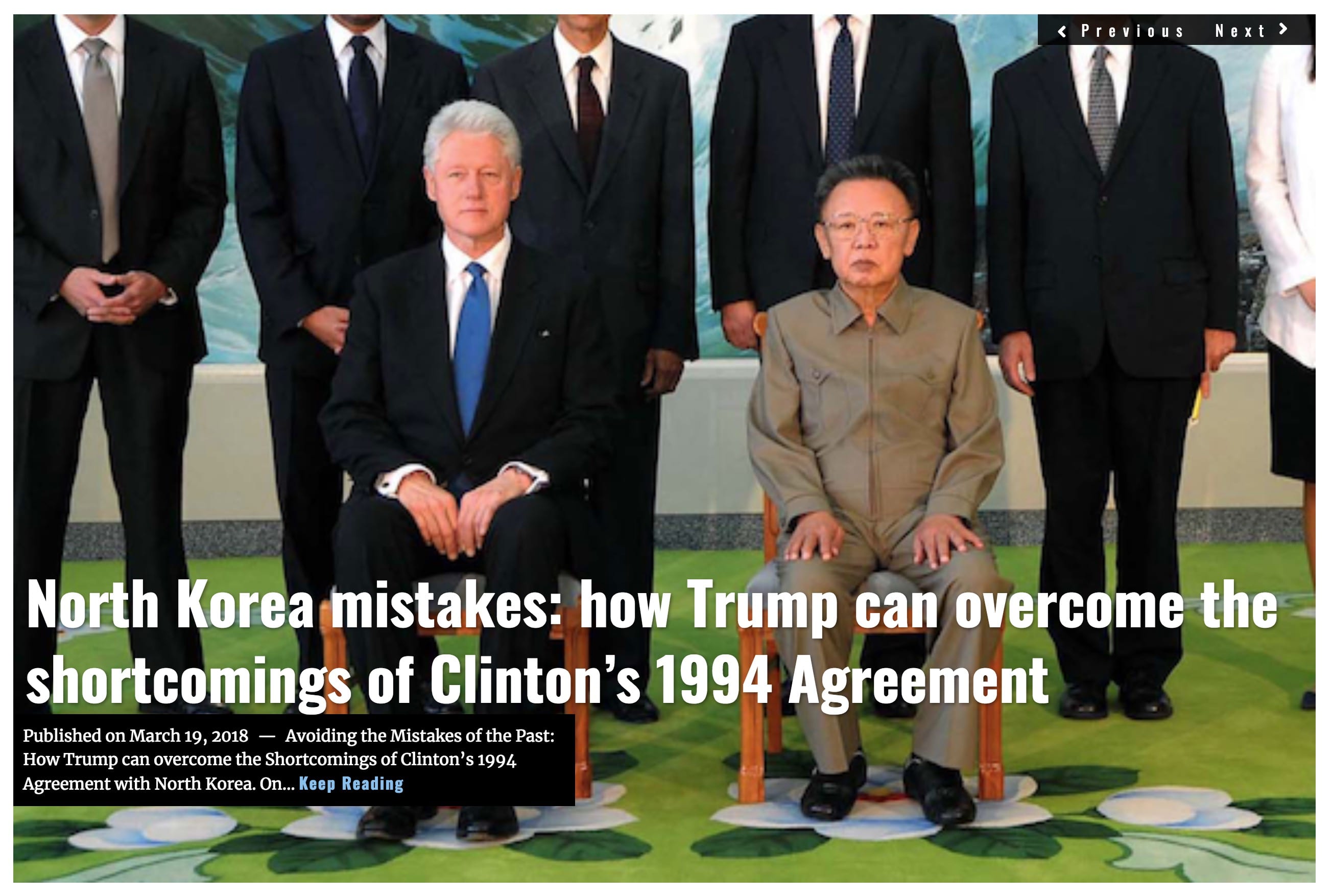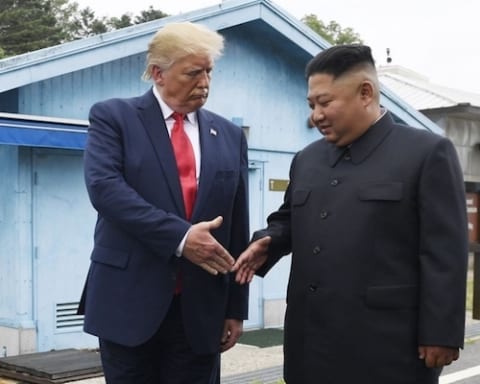It is widely believed that North Korea and its leaders are crazy or irrational. Incoming National Security Advisor, John Bolton, has said that Kim Jong-Un is irrational and cannot be deterred. His predecessor, HR McMaster, said much the same thing.
These views are entirely wrong.
More so, they are not shared by experts who truly understand North Korea. Kim Jong-Un is not only a rational actor focused on the survival of his regime, North Korea has developed into a sophisticated strategic culture, with a national strategy that has held – without interruption for over 25 years – a degree of strategic discipline few countries have shown.
![Image [North Korean propaganda poster with the caption “When provoking a war of aggression, we will hit back, beginning with the U.S.”]](https://limacharlienews.com/wp-content/uploads/2018/04/2.jpg)
Pyongyang’s response was to develop a new strategy that could relieve their short-term security situation, while simultaneously laying the foundation for pushing the US out of Korea in the long term. The North Koreans accelerated their nuclear weapons and missile development so they could replace the USSR’s nuclear umbrella with their own. They coupled this with increasingly theatrical declarations of their intent to rain fire down on their enemies. North Korea would cleverly ratchet tensions up to force the US and South Korea to seek negotiation, then ratchet tensions down to win concessions.
Pyongyang connected this approach to progress in their weapons programs, so tensions would increase as they progressed towards developing a new weapons capability, then fall again when the new capabilities were achieved. All the while, North Korea would be lurching towards having weapons that were capable of threatening the US homeland – and that threat could be used to pressure the US to abandon its presence in South Korea. Its strategy had both a short term and long-term component.
A good example of this strategy in practice was the events before and after North Korea’s first nuclear test in October of 2006. A month later, with tensions at a new high, North Korea said it was willing to abandon nuclear weapons in the next round of six-party talks. In February 2007, it agreed to shut down part of the Yongbyon nuclear facility in exchange for 50,000 tons of fuel aid. North Korea demolished an obsolete cooling tower at Yongbyon and the Bush Administration hailed this as a major breakthrough towards denuclearization. Since then, North Korea has conducted five more nuclear tests. It is hard to see the Bush Administration’s optimism as anything but ridiculous.

North Korea ratchets tensions up while testing new weapons capabilities, then ratchets them back down once those capabilities have been achieved. It manages to win concessions for doing so. Three separate North Korean leaders have held to this strategy without significant deviation for over a quarter century, and have been rewarded at nearly every step for doing so. This level of consistency and commitment isn’t just national strategy, it reflects a strategic culture that guides decisions over long periods of time even when leadership changes. This is a far cry from the popular view of North Korea’s actions as crazy or erratic.
The next time someone tells you North Korea’s leaders are crazy ask yourself this: When was the last time the United States showed that kind of strategic clarity and discipline in dealing with North Korea?
That strategic culture has helped make Kim Jong-Un an effective practitioner of international diplomacy despite his slight experience at the time he took power. Once he became North Korea’s leader, the next major step was to build intercontinental range ballistic missiles that could strike the continental United States.
In 2017, Kim ran more major missile tests than his father ran in his entire seventeen years in power. This includes testing of the Hwasong 15, which is believed to be able to strike almost any major US city. Kim also conducted North Korea’s first hydrogen bomb test. The ability to threaten American cities raises the prospect of “decoupling” the US-ROK alliance, where the US abandons its commitments to South Korea, unwilling to assume such a great risk. This could pave the way for North Korea to pressure the US out of the Korean Peninsula entirely.

After numerous high profile missile tests had brought world tensions to a loud crescendo, Kim gave a New Year’s address calling out for reduced tensions. Taking advantage of the Pyeonchang Olympics, Kim then conducted direct overtures towards Seoul at a time when South Korea grew increasingly concerned the US might launch a pre-emptive attack.
Kim has now baited Donald Trump into promising to meet to discuss denuclearization, and is publicly acknowledging that he is willing to attend talks. Such talks would be a huge victory for North Korea, as Pyongyang has sought, for decades, the legitimacy that would be conferred by meeting with a US President. North Korea once again ratcheted tensions up until it reached a new weapons milestone (in this case, intercontinental missile capabilities and more destructive warheads), before skillfully moving to ratchet tensions down to win a major concession from Washington and Seoul.

For a quarter century, North Korea has had clear goals, and has consistently and methodically followed a realistic plan of action to achieve these goals. The next time someone tells you North Korea’s leaders are crazy ask yourself this: When was the last time the United States showed that kind of strategic clarity and discipline in dealing with North Korea?
John Ford, for Lima Charlie News
John Ford is a reserve Captain in the US Army and a writer on terrorism and global security. His views are his own and do not represent the views of any government agency. You can follow him on twitter at @johndouglasford.
For up-to-date news, please follow Lima Charlie on twitter at @LimaCharlieNews
In case you missed it:

![Image Kim Jong-Un isn’t as crazy as you think [Lima Charlie News][Image: Reuters]](https://limacharlienews.com/wp-content/uploads/2018/04/Kim-Jong-Un-isn’t-as-crazy-as-you-think.png)




![Image Sweden provides ‘quiet diplomacy’ for U.S. – North Korea talks [Lima Charlie News][Image: REUTERS / Janerik Henriksson]](https://limacharlienews.com/wp-content/uploads/2019/01/Sweden-U.S.-–-North-Korea-talks.jpg)
![Image Korea: Is Trump Bringing Peace in Our Time? [Lima Charlie News]](https://limacharlienews.com/wp-content/uploads/2018/05/Korea-Is-Trump-Bringing-Peace-in-Our-Time-480x384.png)


![Blossoming Russo-Turkish alliance leaves U.S., NATO behind [Lima Charlie News]](https://limacharlienews.com/wp-content/uploads/2019/07/Russia-Turkey-alliance-leaves-U.S.-NATO-behind-480x384.png)

